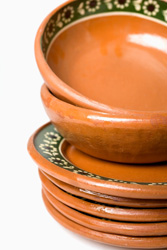Healthy workers and improved ceramics for SMEs
One of the numerous compounds whose use has been restricted in recent years is RCS. It has scientifically been identified as a leading cause of silicosis, a form of pulmonary fibrosis causing breathing difficulties and eventually premature death. The European Scientific Committee on Occupational Exposure Limits (SCOEL) is planning legislation to set a single low exposure level limit based on current scientific knowledge. However, research suggests that different forms of RCS have different toxicological effects based on the amount of dust that actually penetrates deep into the lungs. Numerous industries in the ceramics sector, and particularly small and medium-sized enterprises (SMEs), could face tremendous costs and thus diminished likelihood of survival if they must comply with a generalised low RCS exposure limit, despite the fact that their processes may not in fact pose a danger. The Siliceram project was developed to evaluate the toxicity of different forms of RCS and thus facilitate legislation that will both protect workers and enhance the survivability of SMEs in the ceramics sector. Mathematical modelling demonstrated that the probability of deep lung penetration of RCS dust depends on the particle size. Only a fraction of the particle size distribution reaches the inner lungs with large particles being exhaled. Project results together with toxicity data have the potential to guide a revision of worker exposure limits to be set by legislation. Developments in this area will ensure worker health and encourage continual improvement without forcing SMEs using certain RCS forms with proven reduced risks out of the ceramics market.







